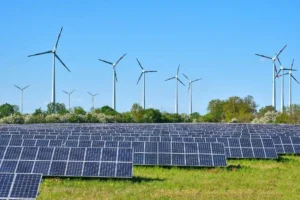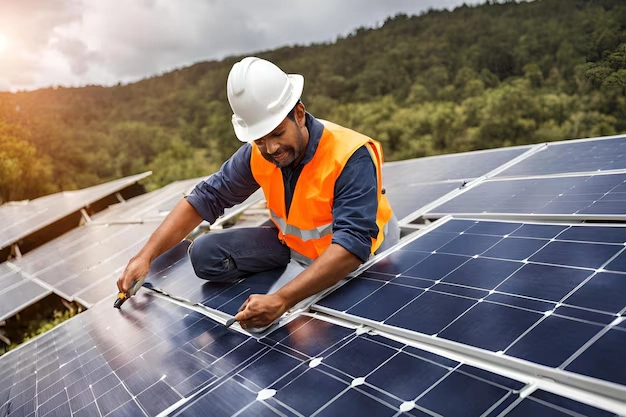In the ever-evolving landscape of climate change challenges, digital marketers are increasingly realizing the importance of reducing their carbon footprint. Transitioning towards achieving carbon neutrality goals is now not just a moral responsibility but a critical business necessity. However, navigating the intricacies of emissions assessments, goal-setting, and sustainable practices can feel overwhelming. Digital marketers must contemplate the essential steps required to achieve carbon neutrality and effectively communicate their eco-friendly commitments to stakeholders. The answers to these questions are pivotal in paving the way towards a more sustainable future for businesses and the planet.
Key Takeaways
- Set realistic neutrality targets aligned with the Science-Based Targets Initiative and conduct thorough emissions assessments to establish a clear roadmap.
- Measure and reduce emissions by quantifying environmental impact, identifying reduction areas, and investing in renewable energy sources and energy-efficient technologies.
- Incorporate sustainable marketing strategies that communicate eco-friendly commitments effectively, enhancing brand reputation and contributing to a more sustainable future.
- Move beyond setting targets by implementing sustainable practices, such as reducing energy consumption from data centers, servers, and devices.
- Establish a carbon neutrality plan that balances greenhouse gas emissions through removal or offsetting, ensuring accountability and transparency throughout the process.
Understanding Carbon Neutrality Basics
Every individual and organization, including digital marketers, has a role to play in reducing their carbon footprint, and understanding carbon neutrality basics is the first step towards achieving this goal. Carbon neutrality refers to a state where greenhouse gas emissions are balanced by removal or offsetting, resulting in net-zero emissions.
Digital Marketing’s Carbon Footprint
Roughly 3.7% of global greenhouse gas emissions are attributed to the digital sector, with digital marketing playing a significant role in this environmental impact. The carbon footprint of digital marketing is substantial, driven by energy consumption from data centers, servers, and devices. Additionally, the production and distribution of digital hardware contribute to emissions.
Setting Realistic Neutrality Targets
By 2025, many organizations aim to achieve net-zero emissions, and digital marketers must set realistic neutrality targets to contribute to this global effort, aligning their goals with the Science-Based Targets Initiative (SBTi) or similar frameworks. Setting achievable targets involves conducting a thorough emissions assessment, identifying areas for reduction, and establishing a clear roadmap for achieving carbon neutrality goals.
Measuring and Reducing Emissions
To effectively achieve carbon neutrality goals, digital marketers must move beyond setting targets and begin quantifying their environmental impact through accurate emissions measurement and reduction strategies. This involves:
- Conducting regular carbon footprint assessments
- Identifying areas for reduction and implementing sustainable practices
- Investing in renewable energy sources
- Implementing energy-efficient technologies
- Encouraging virtual meetings and reducing travel
Sustainable Marketing Strategies
As digital marketers work hard to achieve carbon neutrality goals, incorporating sustainable marketing strategies into their overall business approach is essential, as it enables them to effectively communicate their eco-friendly commitment to customers and stakeholders. By adopting environmentally responsible practices, digital marketers can build trust, enhance their brand reputation, and contribute to a more sustainable future.

Frequently Asked Questions
How Can We Engage Stakeholders in Achieving Carbon Neutrality Goals?
To engage stakeholders in achieving carbon neutrality goals, foster a sense of shared responsibility through transparent communication, inclusive goal-setting, and opportunities for active participation, empowering collective action towards a sustainable future.
What Are the Benefits of Carbon Offsetting for Digital Marketers?
Carbon offsetting offers digital marketers reputational benefits, enhanced brand credibility, and improved stakeholder relationships, while also supporting sustainable development projects and reducing greenhouse gas emissions.
Can Carbon Neutrality Be Achieved Through Renewable Energy Credits?
Yes, carbon neutrality can be achieved through renewable energy credits, which represent the environmental attributes of one megawatt-hour of renewable energy, allowing organizations to offset their greenhouse gas emissions and support clean energy production.
How Do We Prioritize Emissions Reduction in Our Marketing Supply Chain?
To prioritize emissions reduction in the marketing supply chain, identify high-impact areas through data analysis, engage with suppliers to set emission-reduction targets, and implement sustainable practices throughout the production and distribution process.
Are There Any Carbon Neutrality Certifications for Digital Marketing Agencies?
Yes, several carbon neutrality certifications exist for digital marketing agencies, including the ISO 14064 standard, Science-Based Targets initiative, and the CarbonNeutral certification, which provide a framework for measuring and offsetting emissions.
Conclusion
Achieving carbon neutrality requires a thorough approach. By understanding the fundamentals of carbon neutrality, evaluating digital marketing’s carbon footprint, setting realistic targets, measuring and reducing emissions, and implementing sustainable marketing strategies, digital marketers can contribute to a more sustainable future. Continuous monitoring and assessment of emissions and practices are essential to maintaining progress towards carbon neutrality.
You May Also Like To Read:



